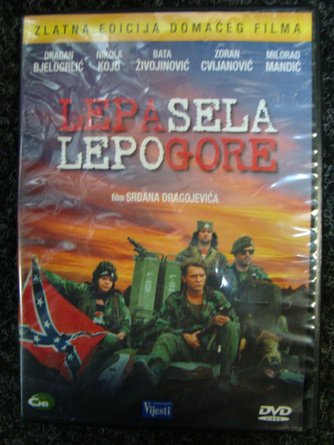

Although the two friends are still very warm and affable with one another, the talk of war is in the air and a degree of tension along ethnoreligious lines is felt, indicating mutual mistrust and apprehension among their respective ethnic groups. During the ribbon-cutting ceremony, Bijedić (or "Comrade Džemo" as he's referred to in the newsreel) accidentally cuts his thumb with the scissors.Ĭut to 1980, not even a decade after its opening, the tunnel has already fallen in disrepair as two local village kids Milan and Halil are playing in its vicinity although they don't dare go inside it because-as they fearfully repeat a local tall tale to one another while staring into the dilapidated structure-" drekavac (an ogre from Slavic mythology) is sleeping inside and if he wakes up he'll kill everyone in the village and burn down their homes".Ĭut forward to spring 1992, as sporadic violent incidents that would eventually spiral into an all-out war are taking place throughout Bosnia, Milan ( Dragan Bjelogrlić), a Serb, and his best friend Halil ( Nikola Pejaković), a Muslim, both in their late teens, are still in their ethnically-mixed village in eastern Bosnia, playing one-on-one basketball on a makeshift hoop in front of a kafana owned by another Serb villager Slobo ( Petar Božović). The tunnel is being opened by the visiting top local Bosnian communist dignitary Džemal Bijedić as the newsreel's voiceover is extolling the quality of tunnel's masonry in hyperbolically glowing terms, gushing about the completed infrastructure project representing a key development for the area's economic progress. The film opens with a faux newsreel-presented as a sardonic allusion to the Yugoslav state-owned Filmske novosti news organization's tone and delivery-reporting on the 27 June 1971 opening ceremony of the Tunnel of Brotherhood and Unity near an unnamed village in the Goražde municipality in eastern SR Bosnia-Herzegovina, constituent unit of the Yugoslav Federation. The main timeframe includes the "present" with a hospitalized Milan, with flashbacks to both his childhood and his early adulthood in the 1980s until the war begins, and subsequent service as a soldier where he is trapped in the tunnel. The film features a non-linear plot line, and the scenes cut back and forth throughout the 1971 to 1999 time period in no particular order. Following the success of the movie, Bulić wrote a novel named Tunel-essentially an expanded version of his magazine article.

Through flashbacks that describe the pre-war lives of each trapped soldier, the film describes life in former Yugoslavia and tries to give a view as to why former neighbours and friends turned on each other.The plot is inspired by a real-life occurrence in eastern Bosnia from the opening stages of the Bosnian War, with the film's screenplay based on a Vanja Bulić-written, Duga magazine published long-form piece about the actual event. The film's screenplay is based on an article written by Vanja Bulic for Duga magazine about the actual event. The plot, inspired by real life events that took place in the opening stages of the Bosnian War, tells a story about small group of Serbian soldiers trapped in a tunnel by a Muslim force. This equates to approximately 8% of the total country's population at the time of the film's release.

LEPA SELA LEPO GORE CEO FILM MOVIE
Almost 800,000 people went to see the movie in cinemas across Serbia. It is considered a modern classic of Serbian cinema. Pretty Village, Pretty Flame (Serbian: Lepa sela lepo gore) is a 1996 Serbian film directed by Srdan Dragojevic that gave uniquely bleak yet darkly humorous account of the Bosnian War.


 0 kommentar(er)
0 kommentar(er)
